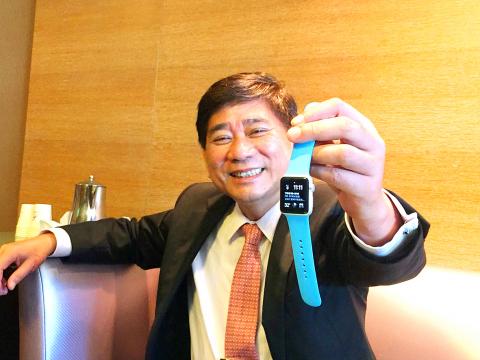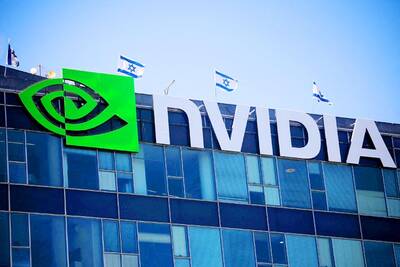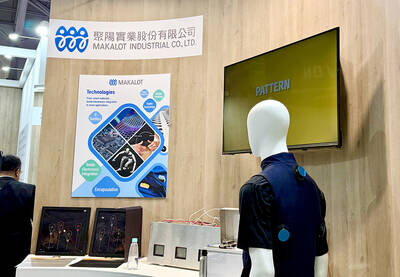Catcher Technologies Co (可成科技), which supplies metal casings for Apple Inc’s iPhones, yesterday revised upward its sales guidance for next quarter, citing increasing demand for smartphone and notebook products.
“Thanks to the smoother production and strong orders for metal casings for new projects, we now forecast the next quarter will be better than this quarter,” Catcher chairman Allen Hung (洪水樹) told a media briefing after the firm’s shareholders’ meeting in Tainan.
In an investors’ conference on April 29, Horng said the company’s revenue next quarter would be flat from this quarter due to the dissipating product cycle for existing projects.

Photo: CNA
In the first five months of this year, Catcher made NT$31.33 billion (US$1 billion) in sales, up 64.05 percent from a year earlier.
Hung said the strong sales performance bodes well for the company throughout this year.
Hung said sales this month would drop slightly from last month’s NT$6.85 billion due to a traditional slow season, but they would pick up significantly from next quarter.
“Sales in the fourth quarter of this year will expand further from the third quarter,” Catcher spokesman James Wu (巫俊毅) said.
Hung said the predicted momentum is based on larger order allocations from its major smartphone clients this year.
Commenting on one of its clients’ new smartphone projects, Hung said a surface treatment on a harder metallic material is more difficult than traditional metal-casing processes and would lower the yield rate at the beginning of the production cycle.
“However, it will not be a major issue for Catcher, as we keep improving our techniques,” Hung said.
Despite soft demand for PCs and weaker-than-expected smartphone sales, Hung said the firm does not worry about its business outlook, because Catcher’s main clients are doing well in the notebook computer and smartphone segments.
“Overall, our main clients are on the winning team,” he said.
In a bid to meet rising demand from clients, Catcher raised its capital expenditure by 35 percent from a year earlier to NT$6.76 billion in the first half of this year, Hung said, adding that the funds will be mainly be used to build new factories.
He said that capital expenditure for the second half of this year would be flat from the first half, mainly because of equipment purchases.
“Overall, capital expenditure for this year is to be lower than last year’s NT$23.2 billion,” he said.
Hung said he is upbeat about Catcher’s ability to outpace rivals for at least five years, adding that the firm’s advanced technologies and techniques in metal casing treatments for various products put it in a strong position.
Despite market concerns about rising competition from Casetek Holdings Ltd (鎧勝) and FIH Mobile Ltd (富智康) regarding orders of Apple MacBook and tablet products, Catcher remains confident about its technological edge.
“Tell me, which company should Catcher be worried about?” Hung asked shareholders.
Metal casing treatments are more delicate and complicated than people imagine, he said, adding that the work requires more than just advanced equipment.

Shares in Taiwan closed at a new high yesterday, the first trading day of the new year, as contract chipmaker Taiwan Semiconductor Manufacturing Co (TSMC, 台積電) continued to break records amid an artificial intelligence (AI) boom, dealers said. The TAIEX closed up 386.21 points, or 1.33 percent, at 29,349.81, with turnover totaling NT$648.844 billion (US$20.65 billion). “Judging from a stronger Taiwan dollar against the US dollar, I think foreign institutional investors returned from the holidays and brought funds into the local market,” Concord Securities Co (康和證券) analyst Kerry Huang (黃志祺) said. “Foreign investors just rebuilt their positions with TSMC as their top target,

H200 CHIPS: A source said that Nvidia has asked the Taiwanese company to begin production of additional chips and work is expected to start in the second quarter Nvidia Corp is scrambling to meet demand for its H200 artificial intelligence (AI) chips from Chinese technology companies and has approached contract manufacturer Taiwan Semiconductor Manufacturing Co (TSMC, 台積電) to ramp up production, sources said. Chinese technology companies have placed orders for more than 2 million H200 chips for this year, while Nvidia holds just 700,000 units in stock, two of the people said. The exact additional volume Nvidia intends to order from TSMC remains unclear, they said. A third source said that Nvidia has asked TSMC to begin production of the additional chips and work is expected to start in the second

REVENUE PERFORMANCE: Cloud and network products, and electronic components saw strong increases, while smart consumer electronics and computing products fell Hon Hai Precision Industry Co (鴻海精密) yesterday posted 26.51 percent quarterly growth in revenue for last quarter to NT$2.6 trillion (US$82.44 billion), the strongest on record for the period and above expectations, but the company forecast a slight revenue dip this quarter due to seasonal factors. On an annual basis, revenue last quarter grew 22.07 percent, the company said. Analysts on average estimated about NT$2.4 trillion increase. Hon Hai, which assembles servers for Nvidia Corp and iPhones for Apple Inc, is expanding its capacity in the US, adding artificial intelligence (AI) server production in Wisconsin and Texas, where it operates established campuses. This

Garment maker Makalot Industrial Co (聚陽) yesterday reported lower-than-expected fourth-quarter revenue of NT$7.93 billion (US$251.44 million), down 9.48 percent from NT$8.76 billion a year earlier. On a quarterly basis, revenue fell 10.83 percent from NT$8.89 billion, company data showed. The figure was also lower than market expectations of NT$8.05 billion, according to data compiled by Yuanta Securities Investment and Consulting Co (元大投顧), which had projected NT$8.22 billion. Makalot’s revenue this quarter would likely increase by a mid-teens percentage as the industry is entering its high season, Yuanta said. Overall, Makalot’s revenue last year totaled NT$34.43 billion, down 3.08 percent from its record NT$35.52